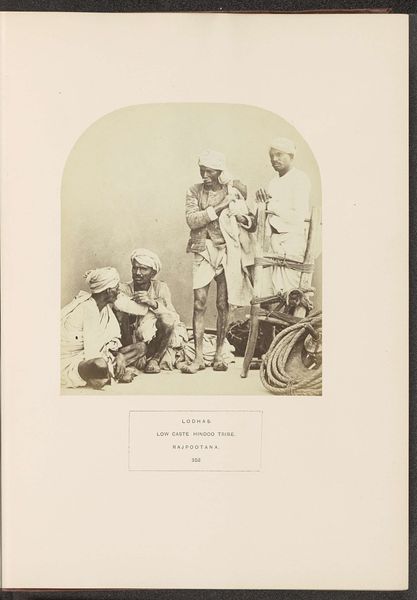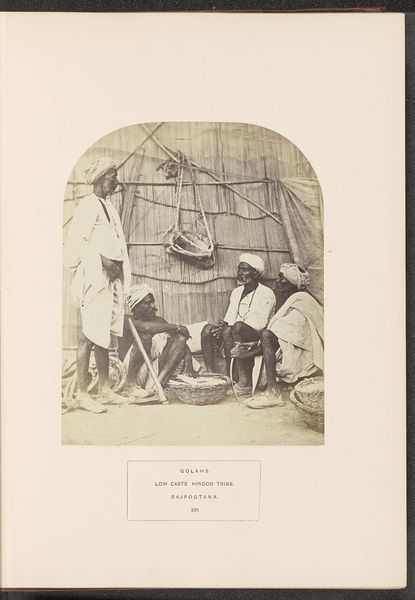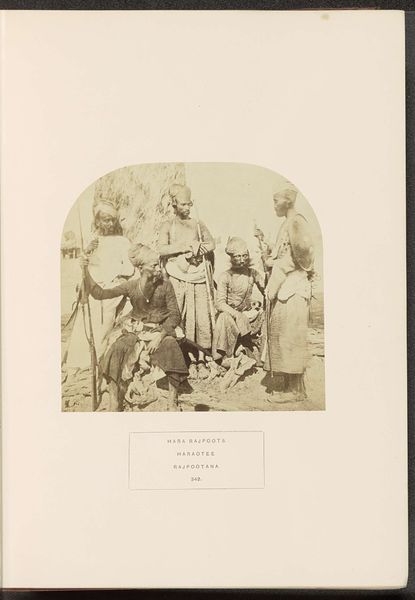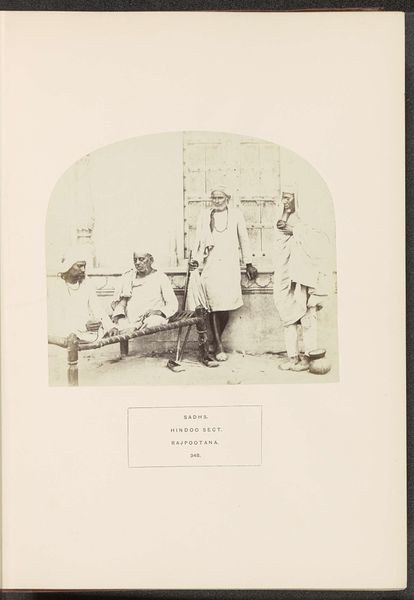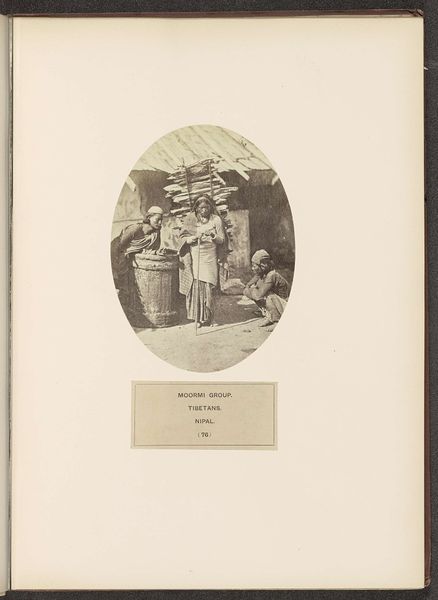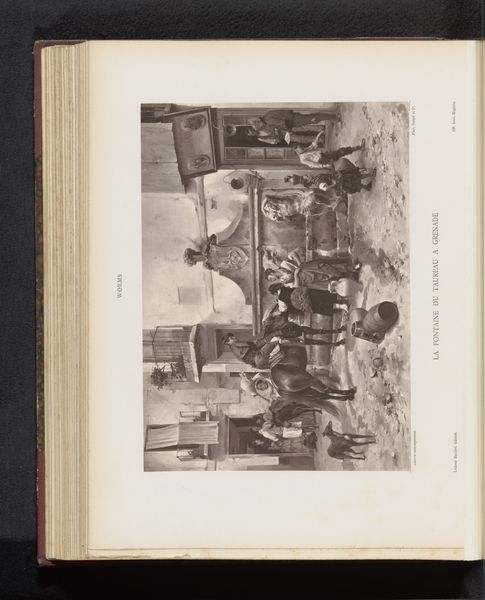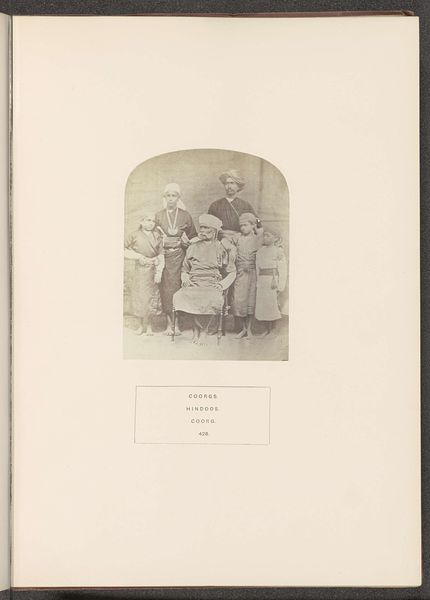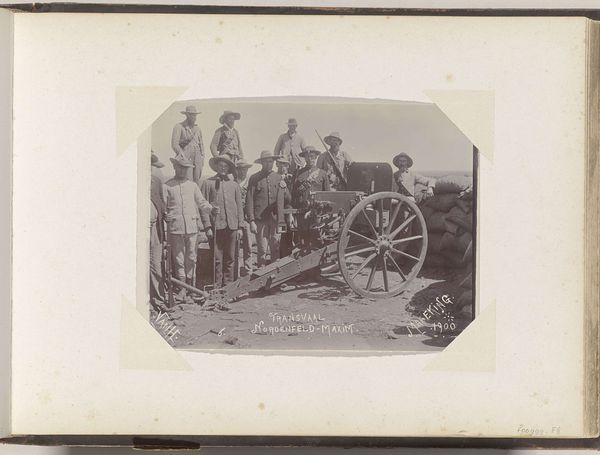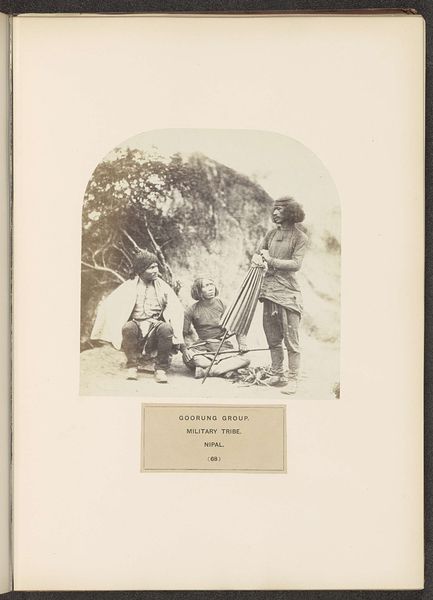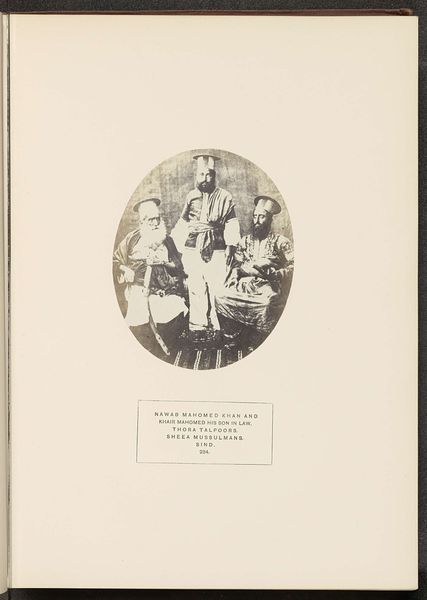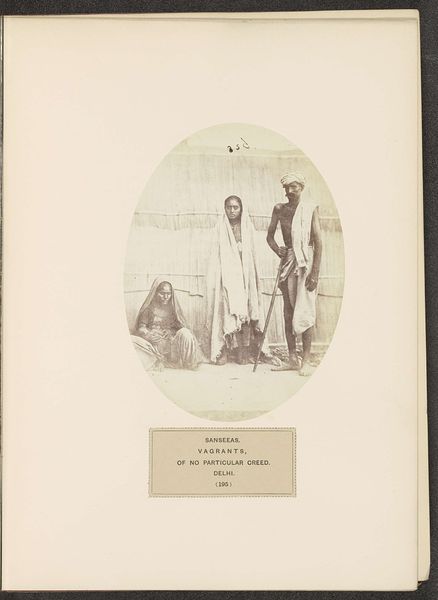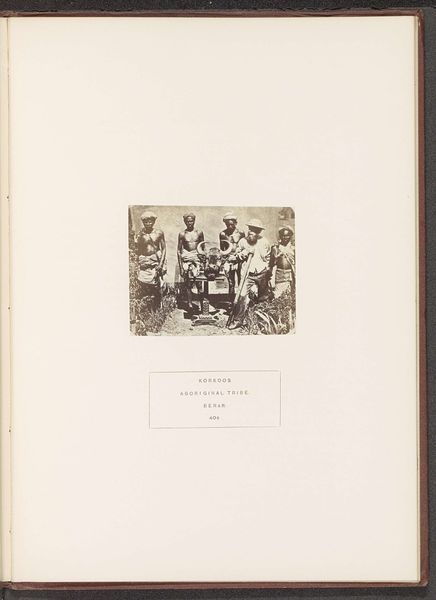
print, photography
#
portrait
#
african-art
# print
#
landscape
#
photography
#
group-portraits
#
orientalism
#
realism
Dimensions: height 155 mm, width 152 mm
Copyright: Rijks Museum: Open Domain
Editor: This print, taken before 1874 by Shepherd & Robertson, is titled "Portret van vier landbezitters (zemindars) bij een houten kar," or "Portrait of four landowners (zemindars) by a wooden cart." It’s… quite striking, almost theatrical in its staging. What do you see in this piece, considering its historical context? Curator: What immediately stands out is how this image functions within the history of colonial representation. It's crucial to understand that Shepherd & Robertson, a British firm, was operating in India during the height of British colonial power. So, while it appears to be a simple portrait of landowners, we need to question who is controlling the narrative and how. How do you think the landowners themselves would have viewed this portrayal? Editor: I hadn’t really considered it that way. I guess I assumed it was just a neutral depiction, but thinking about it as a constructed narrative… the careful arrangement of the figures, the somewhat staged feel… it makes you wonder about the power dynamics at play. The *zemindars*, while landowners, are also being presented to a potentially Western audience. Curator: Precisely. Think about how photographs like these were often circulated back in Europe, reinforcing certain ideas about the colonized "other." The photograph becomes a tool for solidifying colonial authority, subtly shaping public opinion and justifying political control. Is this photograph then a document or an instrument of power? Editor: I see. So it’s less about the objective truth and more about the role it played in a much larger political and social game. Something that seems simple at first can carry all this weight with it. Curator: Exactly. The image prompts us to question whose story is being told and for what purpose. These sorts of images were definitely used to shape the world’s views on colonial India. Editor: That makes me look at it very differently. Thanks for pointing out the historical context that gave rise to the social impacts of this piece!
Comments
No comments
Be the first to comment and join the conversation on the ultimate creative platform.
